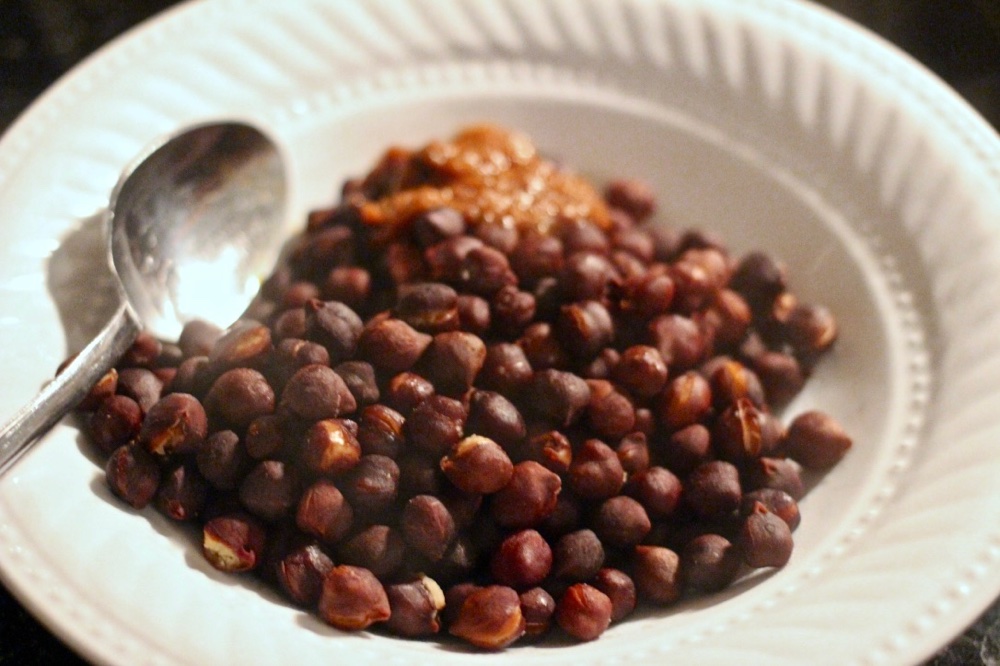
Have you ever heard of black chickpeas? They’re completely natural. There’s no squid ink involved. And they’re a bit of a misnomer. They’re actually naturally dark brown (not black) on the outside and yellow like regular chickpeas on the inside. And they have a slightly nuttier flavour and tougher skins.
You cook them the same way you’d cook other chickpeas: boiled, pressure boiled (in a pressure cooker or Instant Pot), steamed, or pressure steamed, generally. Because the skins are tougher, though, you will probably end up cooking them for longer, and the skins won’t soften as much as regular chickpeas, which means you can still use them like regular chickpeas in dips, but they won’t be as smooth when blended. They’re better in curries, stews, soups and salads where they’ll stay whole and have a chewy texture. That texture is one of the appeals, actually, creating a denser, more filling, more contrasting mouthfeel.
If you haven’t heard of black chickpeas before, you’re not alone. They’re not that common in North America. They’re more common in India, Iran, Mexico, Ethiopia and throughout the Middle East, apparently.
The first I made them, I pressure steamed them to taste the natural flavour and then combined them with my homemade harrief, a spicy pepper paste more commonly called harissa. Another time, I boiled them and tossed them with a spicy Goan curry sauce I’d been asked to test. I preferred boiling them for these meals since the skins softened more. I probably lost more nutrients this way, though. While I’m a huge fan of pressure-steaming regular chickpeas because it leads to an incredibly smooth and creamy result, that’s not the case with black chickpeas. So I suggest boiling or pressure-boiling them instead. In both cases, once I mixed in the sauce after tasting the plain chickpeas, I tasted more sauce than legume, which is usually what you want anyway.
Kala Chana contain a lot of protein, like other beans and lentils and a giant bag at my local Bangladeshi grocery store is dirt cheap, making it a great vegetarian option. They were a little more expensive than regular chickpeas, but a treat to try something different, the same way I enjoyed the super-high-protein, heirloom Tepary Beans that I bought from Native Seeds/SEARCH in Tucson, Arizona last winter.
Here’s a basic recipe for Kala Chana or Black chickpeas in case you can find them:
Basic Black Chickpeas or Kala Chana
2 cups dry black chickpeas
Soak chickpeas overnight in minimum 6 cups water. Drain and boil in 10 cups water for 1 to 1 1/2 hours, or until tender.
Alternatively, pressure-cook for 40 minutes, or until tender. Pressure-steaming will take maybe 1 1/2 hours.
Enjoy with whatever sauce you like, from curry to tahini to peanut to soy to balsamic or white wine vinaigrette.
Leave a Reply